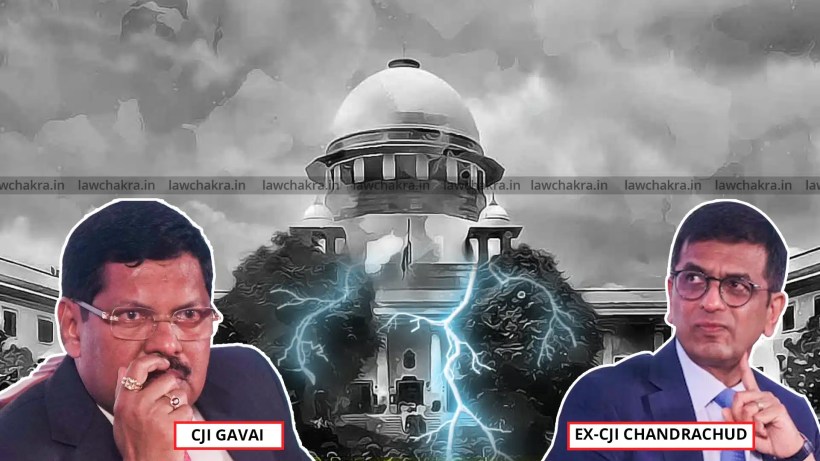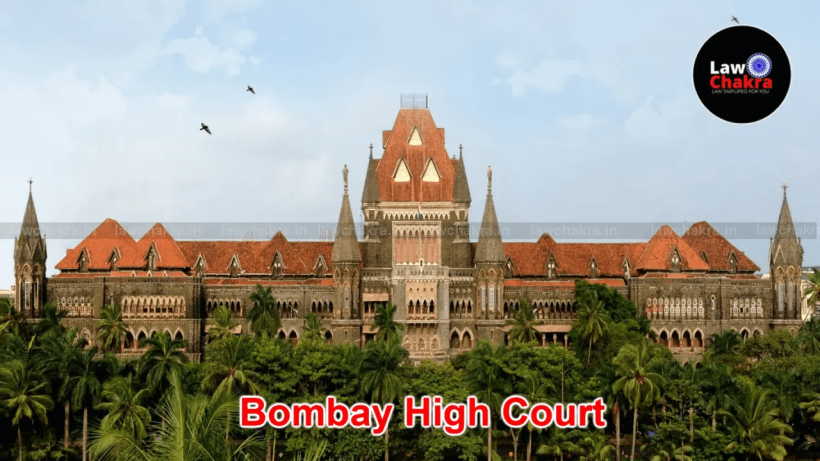CJI Gavai Wants Ex-CJI Chandrachud To Be Removed Immediately?

The Supreme Court docket administration has written to the Centre urging instant elimination of ex-CJI D.Y. Chandrachud from his official residence. This comes amid rising hypothesis over present CJI Gavai reversing a number of key selections made by his predecessor.
Thanks for studying this publish, remember to subscribe!
NEW DELHI: In an surprising twist that has set authorized and political circles abuzz, the Supreme Court docket of India’s administrative wing has written to the Centre urging the instant eviction of former Chief Justice D.Y. Chandrachud from his official residence.
Whereas official sources cite “protocol and lodging logistics,” insiders whisper one thing far deeper and darker is afoot.
Is that this nearly a bungalow? Or are we witnessing the opening strikes of a judicial chilly struggle?
ALSO READ: CJI Chandrachud Inaugurates Multi-Facilitation Centre in SC
Justice D.Y. Chandrachud, India’s fiftieth Chief Justice, undeniably left a robust impression on the judiciary via his progressive judgments and reformist spirit. Rising swiftly via the ranks, first as a Bombay Excessive Court docket decide, then Chief Justice of Allahabad Excessive Court docket, and finally to the Supreme Court docket, his journey was influenced by each lineage and mentorship.
Because the son of Justice Y.V. Chandrachud, India’s longest-serving CJI, his ascent was seen by many as a continuation of a legacy. Backed by stalwarts like Soli Sorabjee and Ram Jethmalani, his early elevation raised eyebrows but additionally showcased his authorized brilliance.
Nonetheless, whereas a lot has been stated about his contributions to constitutional jurisprudence, his administrative legacy tells a unique story. Regardless of his privileged begin and excessive expectations, his tenure as an administrator was usually seen as heavy on optics however mild on lasting institutional reforms.
Justice D.Y. Chandrachud’s profession displays a fancy mix of inherited alternative, private benefit, and public notion, one which leaves a notable judicial legacy however a contested administrative one.
Justice D.Y. Chandrachu, recognized for his liberal rulings, progressive outlook, and eloquent dissents, stepped down from the Chief Justice publish in November 2024. However in his wake, he left a judiciary extra assertive, extra vocal, and extra keen to push the constitutional envelope.
Enter Justice B R Gavai, the present CJI, who has quietly begun reversing or stalling a lot of Chandrachud’s key initiatives. From administrative overhauls to jurisprudential philosophies, observers have begun to sense a shift, not simply in tone, however in turf.
Justice Chandrachud, usually seen because the mild mental, introduced with him an educational brilliance, liberal jurisprudence, and a public-facing reformist picture. He championed constitutional morality, particular person rights, and digital reforms with eloquence and empathy. His courtroom presence and speeches mirrored a robust ideological dedication to progressive values.
In distinction, Justice Gavai, the silent strategist, has maintained a low public profile however seems to be methodically undoing key administrative and procedural selections of his predecessor. With out public confrontation or commentary, his tenure to date is outlined extra by motion than articulation, suggesting a extra pragmatic, internally-focused strategy to judicial management.
The Supreme Court docket’s shift from CJI Chandrachud’s fashionable, symbolic brand to CJI Gavai’s return to the normal Lion Capital displays extra than simply aesthetics, it hints at differing philosophies of institutional identification. Whereas the previous embraced modern symbolism and reformist imagery, the latter appears to favour rootedness, restraint, and legacy.
Whether or not these adjustments sign a deeper ideological shift or are merely sensible corrections stays to be seen. However in a judiciary the place symbolism carries weight, such reversals subtly form the legacy and management model of every Chief Justice.
Collectively, this dichotomy displays two distinct philosophies of judicial governance: one formed by visibility and imaginative and prescient, the opposite by quiet recalibration and institutional management.
The Bungalow That Broke the Ice
Historically, former Chief Justices are allowed to retain their official residences for a number of months after demitting workplace, a courtesy extra rooted in conference than codified protocol. But, in a sudden and unceremonious transfer, the Supreme Court docket administration underneath CJI Gavai has written to the Centre, urging the instant eviction of Chandrachud.
Coincidence? Or retaliation? Why the urgency? Why now?
Since taking up the helm, CJI Gavai is alleged to have taken a pointy flip away from the liberal legacy of his predecessor. Sources recommend that a number of of Chandrachud’s reforms, notably these selling judicial transparency and technological openness, have both been shelved or considerably slowed.
Delicate benches have reportedly been reshuffled in ways in which might dilute the impression of progressive Public Curiosity Litigations (PILs) circumstances that had been as soon as central to Chandrachud’s judicial philosophy.
Moreover, courtroom insiders declare that Gavai has quietly discouraged media-friendly practices launched earlier, together with the free accessibility of courtroom proceedings. To some, these could also be seen as mere administrative selections.
Is that this judicial pragmatism or an ideological rollback?
There’s additionally hypothesis that the stress is private as a lot as institutional. Chandrachud’s tenure was marked by a extremely public-facing judiciary, with YouTube broadcasts of hearings, adoption of AI instruments, and a progressive push on points like LGBTQ+ rights.
To traditionalists, his model could have appeared performative; to many others, it was transformative. In stark distinction, Gavai has stored a decrease public profile. But, his quiet strikes, assertive and strategic.
Is This Private?
This sudden push to evict Chandrachud additionally raises unsettling questions.
- Why was the eviction letter leaked to the press now?
- Who stands to realize by portraying the previous CJI as clinging to privileges?
- Is Gavai merely asserting institutional management or is he enjoying a deeper political recreation, presumably aligning with forces outdoors the courtroom?
The Indian judiciary has at all times maintained an air of independence, however this feud feels political in all the pieces however title.
Trying forward, with CJI Gavai set to retire in late 2025, hypothesis is rife that he could also be positioning a successor who contrasts with Chandrachud’s liberal and tech-forward legacy.
The bungalow dispute could solely be the tip of the iceberg. Beneath it lies a simmering conflict of egos, ideologies, and maybe unseen political alignments. On this silent struggle of robes and reputations, one factor is obvious, justice could also be blind, however ambition inside the system is something however.
FOLLOW US ON YOUTUBE FOR MORE LEGAL UPDATES






